With global warming already at 1.1°C above pre-industrial levels, limiting it to 1.5°C requires deep, rapid and sustained greenhouse gas emissions reductions in all sectors, with global emissions needing to be cut by almost half by 2030, warns the UN’s Intergovernmental Panel on Climate Change (IPCC) on the publication of its Synthesis Report (AR6). However, it adds, taking the right action now could result in the transformational change essential for a sustainable equitable world. The huge volume of work included in the report also considers aviation’s contribution to global warming and how its climate impacts can be mitigated. As a hard-to-abate sector, there are no easy answers, said Professor David Lee, one of the report’s authors, with alternative fuels providing the best hope of reaching net zero, together with a need for carbon dioxide removal deployment for residual emissions.
“The Synthesis Report is a very clear signal that there are significant challenges ahead for aviation and no easy answers or quick fixes,” said Professor Lee, Lead Author of the transport component of AR6 Working Group III (WGIII), which focused on the mitigation of climate change, and head of the Aviation and Climate Group at Manchester Metropolitan University in the UK.
The WGIII Technical Summary notes that in 2019, direct GHG emissions from the transport sector in total were 8.7 GtCO2e, up from 5.0 GtCO2e in 1990 and accounted for 23% of global energy-related emissions. Of direct transport emissions, 70% came from road vehicles, while 1%, 11% and 12% came from rail, shipping and aviation respectively, with emissions from shipping and aviation continuing to grow rapidly. Between 2010 and 2019, emissions from aviation were among the fastest-growing of all transport segments, at around 3.3% per annum on average. The latest data indicates aviation is responsible for approximately 2.4% of total anthropogenic emissions of CO2.
“Transport-related emissions in developing regions of the world have increased more rapidly than in Europe or North America, a trend that is expected to continue in coming decades,” predict the authors.
Since its Fifth Assessment Report was completed in 2014, the IPCC says there has been a growing awareness that to deal with fast-growing emissions from the sector, there is a need for demand management solutions combined with new technologies such as advanced biofuels, hydrogen fuels and hydrogen-derived synthetic fuels.
“The scenarios literature indicated that fuel and technology shifts are crucial in reducing carbon emissions to meet temperature goals,” says the Technical Summary.
While aircraft and propulsion system efficiency improvements can provide some mitigation potential, additional CO2 emissions mitigation technologies will be required. For aviation, such technologies include high energy density biofuels and low-emission hydrogen and synthetic fuels. Electrification could play a niche role for short-range aviation and can reduce emissions from airport operations.
Changes to national and international governance structures could be required for the deployment of low-carbon aviation and shipping fuels that support decarbonisation of the transport sector.
“The UNFCCC does not specifically cover emissions from international shipping and aviation. Reporting emissions from international transport is at the discretion of each country,” notes the WGIII Technical Summary. “While ICAO and IMO have established emissions reductions targets, only strategies to improve fuel efficiency and demand reductions have been pursued, and there has been minimal commitment to new technologies.”
It adds: “International cooperation will need to be strengthened in several key respects in order to support mitigation action consistent with limiting temperature rise to well below 2°C in the context of sustainable development and equity. Many developing countries’ Nationally Determined Contributions [the Paris Agreement requests each country to outline and communicate their post-2020 climate actions, known as their NDCs] have components or additional actions that are conditional on receiving assistance with respect to finance, technology development and transfer, and capacity building, greater than what has been provided to date. Sectoral and sub-global cooperation is providing critical support, and yet there is room for further progress.
“In some case, notably with respect to aviation and shipping, sectoral agreements have adopted climate mitigation goals that fall short of what would be required to achieve the long-term temperature goal of the Paris Agreement.” The WGIII report says some authors argued that including shipping and aviation under the Paris Agreement could spur stronger decarbonisation efforts.
It should be noted that WGIII’s report was published in April 2022, before ICAO adopted a Long Term Aspirational Goal of net zero CO2 emissions from international aviation by 2050. International aviation CO2 emissions make up around 65% of the global total, the remainder coming from domestic aviation emissions, which should be covered by NDCs.
On demand management, the Technical Summary says there is a growing need for systemic infrastructure changes that enable behavioural modifications and reductions in demand for transport services that can in turn reduce energy demand. Covid-19 had shown behavioural interventions can reduce transport-related GHG emissions and lockdowns had shown the transformative value of telecommuting in replacing significant numbers of work and personal journeys.
“Mitigation strategies can be classified as Avoid-Shift-Improve options that reflect opportunities for socio-cultural, infrastructural and technology change,” it explains. The Summary says greatest Avoid potential comes from reducing long-haul aviation and providing short-distance low-carbon urban infrastructures, with the greatest Shift potential coming from a switch to plant-based diets, and changes within the building sector providing the greatest Improve potential.
The price elasticities of demand suggest that car use is inelastic to prices, while train use is relatively inelastic to the cost of using rail. Conversely, studies show consumers to be more responsive to the cost of flying, so strategies that increase this cost are likely to contribute to some avoidance of aviation-related GHG emissions.
In addition to deep, rapid and sustained emission reductions, the deployment of carbon dioxide removal (CDR) to counterbalance hard-to-abate residual emissions is unavoidable if net zero CO2 or GHG emissions are to be achieved, says the report.
It defines CDR as “Anthropogenic activities removing CO2 from the atmosphere and durably storing it in geological, terrestrial, or ocean reservoirs, or in products. It includes existing and potential anthropogenic enhancement of biological or geochemical CO2 sinks and direct air carbon dioxide capture and storage (DACCS), but excludes natural CO2 uptake not naturally caused by human activities.”
Professor Lee said the IPCC had been very careful to define what is meant by carbon dioxide removals, which do not include aviation offsets of ‘emissions avoidance’.
The aviation sector will also have to adapt to climate change impacts such as extremely high temperatures, intense rainfall leading to flooding, more intense winds and/or storms, and sea level rise possibly seriously impacting transport infrastructure and operations. Changes to global jet streams could impact flights, extreme weather conditions could affect runways and cause payload restrictions, and moderate-or-greater clear-air turbulence on transatlantic flight routes in winter will likely increase significantly in the future as the climate changes. More research is needed to fully understand climate-induced risks to transportation systems, says the report.
The IPCC’s Sixth Assessment Report (AR6) comprises three main sections that have already been separately published: The Physical Science Basis (WGI), Impacts, Adaptation, and Vulnerability (WGII) and Mitigation of Climate Change (WGIII). Each report has a Summary for Policymakers (SPM), a Technical Summary (TS) and individual chapters. The decarbonisation of aviation is covered in section 10.5 of WGIII’s Chapter 10 and brings together peer-reviewed studies by scientists from around the world.
The AR6 Synthesis Report (SYR), with its own SPM, just published brings together the findings of the three sections, plus three other special reports, to make a comprehensive review of global climate knowledge and provide scientific underpinning for global climate action and policymaking. It is expected to inform discussions at COP28 later this year and is likely to be the last such report until around 2030.
The IPCC says its warning in 2018 of the unprecedented scale of the challenge required to keep warming to 1.5°C had since become even greater due to the continued increase in GHG emissions. “Climate resilient development becomes progressively more challenging with every increment of warming. This is why the choices made in the next few years will play a critical role in deciding our future and that of generations to come.”
However, said the scientists contributing to the report, there are multiple, feasible and effective options to reduce greenhouse gas emissions and adapt to human-caused climate change that were available now.
“Mainstreaming effective and equitable climate action will not only reduce losses and damages for nature and people, it will also provide wider benefits. This Synthesis Report underscores the urgency of taking more ambitious action and shows that if we act now, we can still secure a liveable, sustainable future for us all,” said IPCC Chair Hoesung Lee.
“Transformational changes are more likely to succeed where there is trust, where everyone works together to prioritise risk reduction, and where benefits and burdens are shared equitably.”
Professor Piers Forster, Director of the Priestley International Centre for Climate, a board member of the UK’s Climate Change Committee and an AR6 author, told GreenAir: “The report is clear that CO2 emissions need to go to net zero to halt warming and until they do, the climate will go on getting more extreme. The aviation sector really needs to properly plan and invest for net zero in 2050 and beyond. Other sectors won’t let aviation off the hook as they also need to pull out all the stops. Additionally, the sector needs to tackle non-CO2 emissions to stop these growing and look at where and when it flies people. If a summer holiday hotspot is burning, maybe it will not be the destination of choice.”
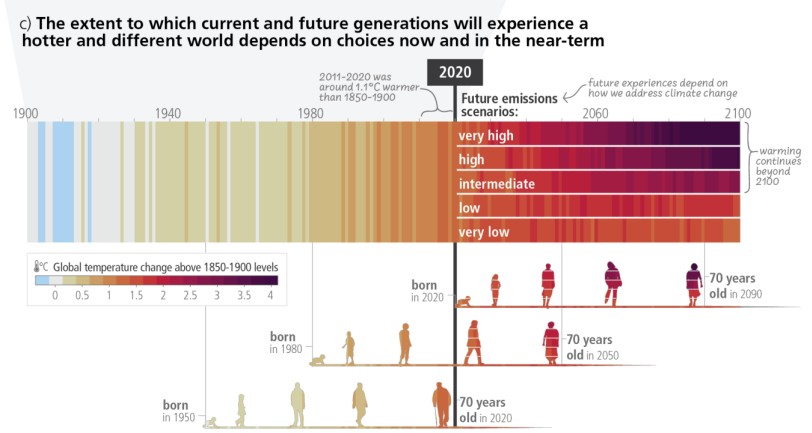
Source: IPCC AR6 SYR SPM


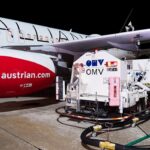
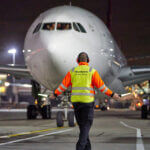
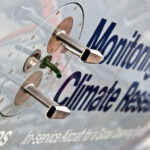



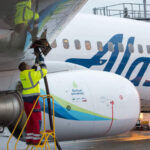
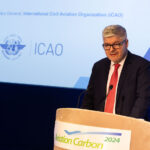
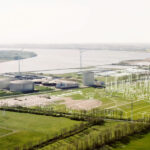
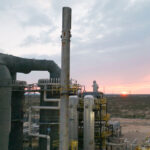

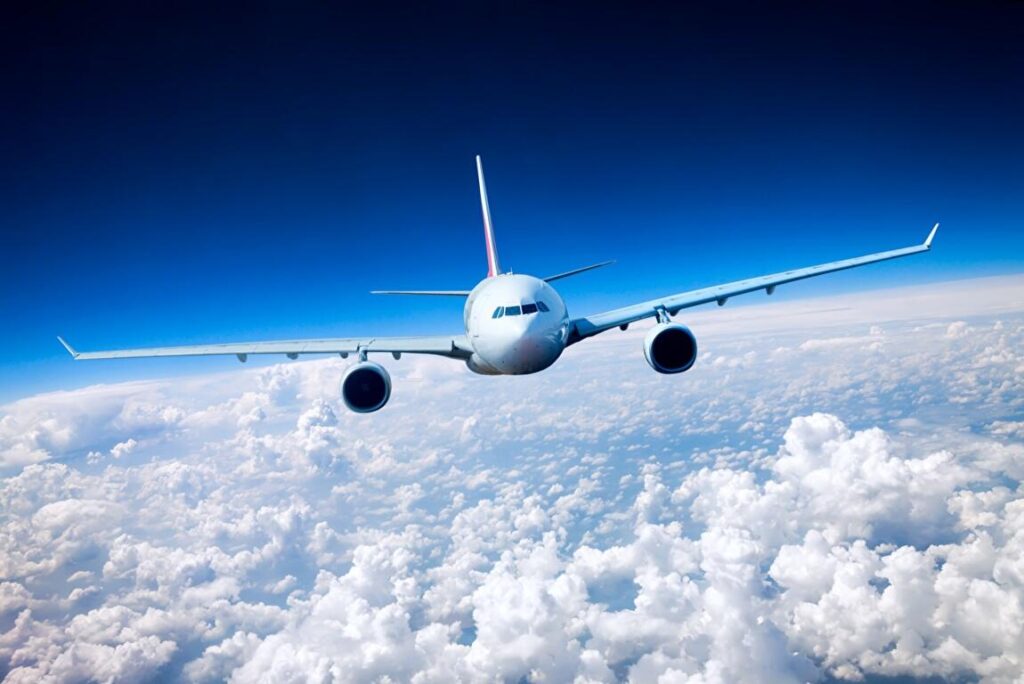


More News & Features
Progress on decarbonising the airline sector has been slow this year, says IATA chief
EASA releases status report on Europe’s SAF production and readiness to meet blending targets
New partnerships formed to drive e-SAF production in Nordic markets
IAG continues to go big on e-SAF as it inks 10-year offtake agreement with Infinium
US on the pathway to achieving its 2030 SAF Grand Challenge target, says DOE report
Advocacy group launches to speed up production and use of SAF across Asia